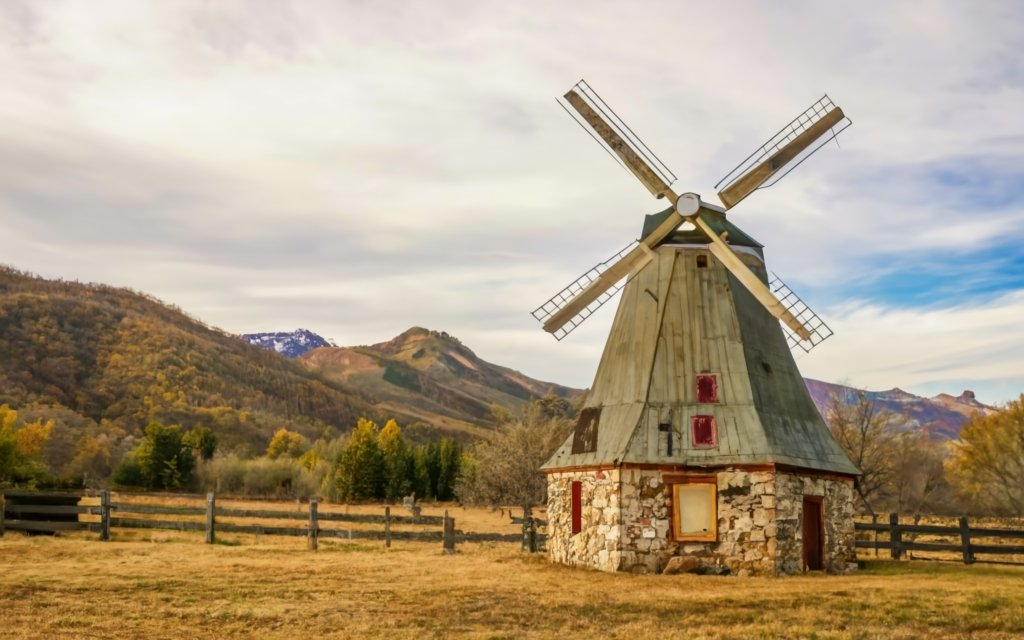The Winds of Change


Wind power has come a long way since its beginnings thousands of years ago. From old windmills to today's sleek turbines generating gigawatts of electricity, harnessing the wind has long been a core pillar of human ingenuity and civilization. This article traces the fascinating history of wind energy and how it has transformed into the booming renewable energy source we know today.
Energreen 2023-11-02
The earliest known use of wind energy dates back over 5,000 years to ancient Persia, where sails were used to propel ships. By 200 BC, simple windmills were pumping water and grinding grain in ancient China. Wind-powered machines became more advanced in the Middle Ages, with horizontal-axis windmills dotting landscapes across Europe by the 12th century.
These early windmills, with their iconic four-armed blades spinning in the wind, were an engineering marvel. Though relatively inefficient, they could reliably convert wind's kinetic energy into rotational energy to mill grains, pump water, and more. Windmills provided a crucial labor-saving technology that spurred economic growth in medieval Europe and beyond.
The 19th century saw further improvements in windmill efficiency, including aerodynamic blade designs and self-regulating wheels. Windmills remained essential for farming, water pumping and industry through the early 20th century. But the winds of change were blowing as cheaper fossil fuel plants took over.
By the 1970s, soaring oil prices and environmental concerns sparked new interest in wind power. NASA engineer William Heronemus pioneered the concept of clustering many smaller wind turbines together into "wind farms", increasing efficiency. The first commercial wind farm was installed in New Hampshire in 1980, marking wind energy's modern revival.
In the 1980s and 90s, wind turbine technology leaped forward as generators grew larger and more efficient. The development of stronger composite materials enabled lighter blades that could capture more wind. Sophisticated control systems allowed turbines to automatically orient into the wind. And the move from fixed- to variable-speed turbines further improved efficiency.
Advances in blade aerodynamics were particularly impactful. The distinctive three-blade, upwind rotor design was perfected, with tapered blades using twist and torque for optimal energy capture. Computational fluid dynamics simulations helped fine-tune blade contours for peak performance.

Offshore wind farming also expanded dramatically during the 1990s, led by Denmark and Germany harvesting North Sea winds. Floating deepwater turbines are now extending options further. Onshore, utilities were finding wind energy an economical way to meet growing electricity demand without carbon emissions.
The 21st century has seen wind energy spread its wings worldwide, transforming into a full-fledged industrial scale power source. Total global capacity exceeded 700 gigawatts by 2020, supplying over 7% of the world's electricity needs.
Several factors unleashed rapid growth. Heightened climate change concerns prompted renewable energy targets and subsidies in many nations. Falling turbine costs improved competitiveness with fossil fuels. Supportive government policies encouraged wind farm development.
China embraced wind energy in the 2000s and quickly became the world leader. The United States also ramped up wind capacity, especially in the wind-rich Midwest. Texas alone has over 30 gigawatts installed, surpassing most countries. Offshore wind is also proliferating in Europe and Asia as floating turbines open up new areas.
The size and scale of wind projects reached new extremes. Onshore turbines now soar up to 260 meters, with blades exceeding 100 meters. The advanced Haliade-X offshore turbine peaks at 260 meters with 107 meter blades, generating 15 megawatts. Wind farms keep expanding, including mega-projects like the 7 gigawatt East Anglia array under construction off the UK coast.
Maximum output has skyrocketed 700-fold from the 1980s. Sophisticated wind forecasting enhances grid integration. At times, wind has supplied over 60% of electricity demand in countries like Denmark and Uruguay, showing its potential as a stable energy backbone. With more networked wind farms and storage, some experts envision wind one day meeting global energy needs many times over.
Wind power is now firmly cemented as a mainstream energy source poised for much greater expansion. According to the International Energy Agency (IEA), wind could grow over 17-fold by 2050 and supply up to 40% of global electricity under sustainability goals.
Several promising developments should aid growth. Larger and more efficient turbines will continue to drive down costs. Floating deepwater turbines unlock vast offshore resources. Hybrid designs integrating wind with solar, batteries and hydrogen create more flexible systems. And better forecasting and grid coordination will enable higher wind integration without disruption.
Artificial intelligence and big data techniques will further optimize wind farm operations. Drones and robots handle inspections and maintenance. Recycling and more sustainable manufacturing reduces the environmental footprint. Community and distributed ownership models help expand wind's socioeconomic benefits.
Countries around the world are setting ambitious offshore targets, including 400 gigawatts in the EU by 2050. China's gigantic onshore and offshore buildout will dwarf all others. With prices now rivalling fossil fuels globally, the IEA forecasts wind capturing 90% of additions in the next 5 years.
Of course, major challenges remain. Wind lacks effective large-scale storage and transmission is lagging, though workable solutions exist. Local community and environmental concerns must be addressed thoughtfully. And substantial investments in manufacturing and infrastructure are essential.
But the winds of change continue blowing. With thoughtful policies and visionary spirit like the innovators of history, wind energy can help lead the world to a cleaner energy future and prove the winds of change can lift us to new heights.
International Energy Agency. 2021. “Wind Energy Report 2021.” https://www.iea.org/reports/wind-energy-report-2021
Global Wind Energy Council. 2021. “Global Wind Report 2021.” https://gwec.net/global-wind-report-2021/
US Department of Energy. 2022. “Wind Market Report 2022.” https://www.energy.gov/eere/wind/articles/wind-market-reports